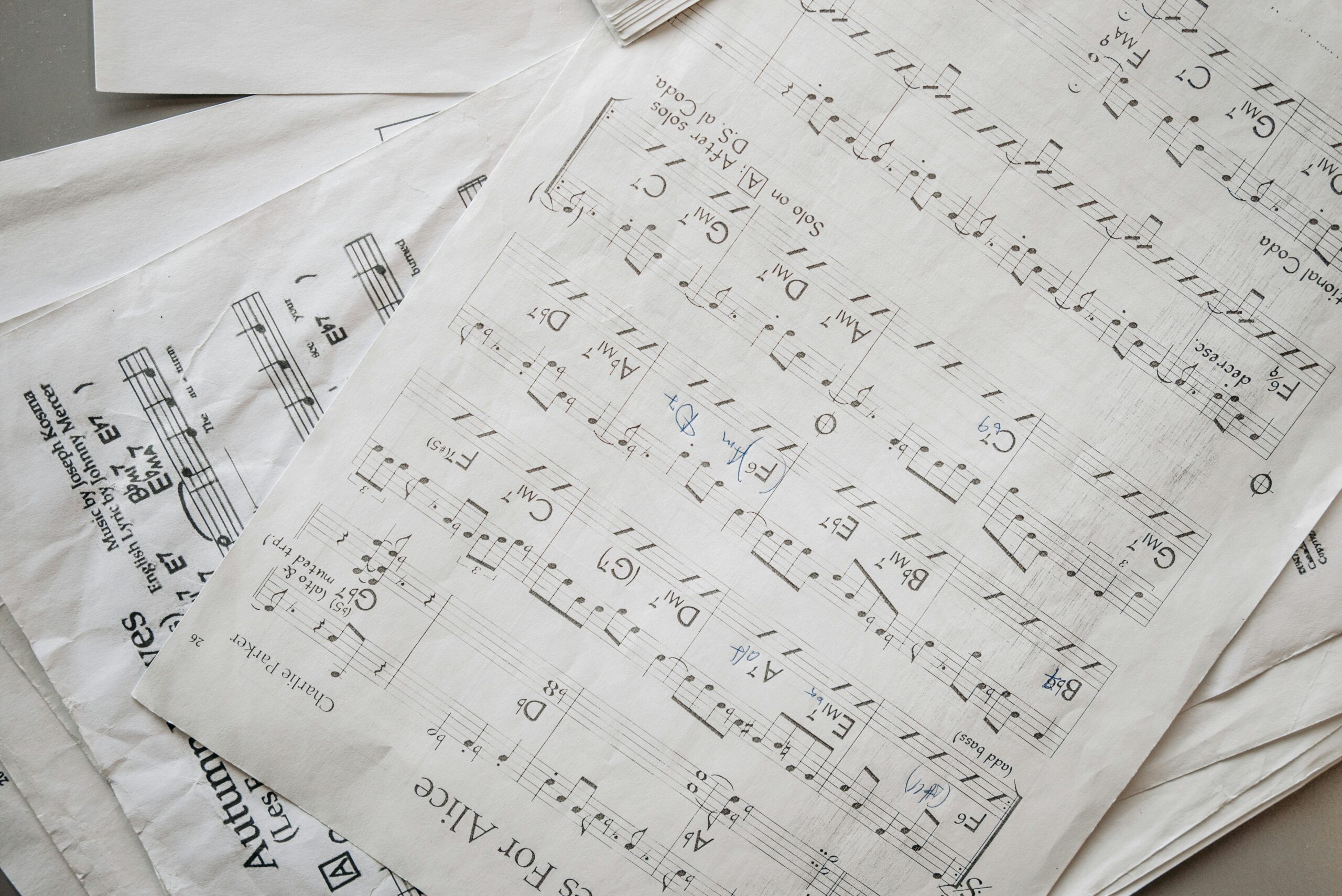Are you tired of playing the same old guitar chords in the same old way? Do you crave a fresh new sound to spice up your musical repertoire? Well, look no further, because we’re about to embark on a journey through the mystical world of guitar chord inversions! Get ready to flip, reverse, and spin your way to musical enlightenment with this comprehensive guide to exploring guitar chord inversions like never before. So grab your guitar, strap in, and get ready to turn your music upside down!
Contents
- 1 Understanding the Basics of Guitar Chord Inversions
- 2 The Role of Root Position in Chord Structures
- 3 First Inversion: Expanding Your Chord Vocabulary
- 4 Mastery Through Second Inversion: A Deeper Dive
- 5 Navigating Through Third Inversions and Beyond
- 6 Applying Chord Inversions: Practical Tips for Guitarists
- 7 Advanced Techniques: Exploring Altered Bass Notes
- 8 FAQs
- 9 Rock On with Guitar Chord Inversions!
Understanding the Basics of Guitar Chord Inversions
So you think you know your guitar chords, huh? Well, get ready to have your mind blown with the magical world of chord inversions. It’s like the guitar equivalent of a secret handshake – once you master it, you’ll be in the cool kids club.
Think of chord inversions as the fancy way of playing the same old chords you know and love. It’s like putting a new spin on an old classic - suddenly, everything sounds fresh and exciting. Plus, it’s a great way to impress your friends and show off your guitar skills.
With chord inversions, you can create a whole new world of sound and harmony. It’s like unlocking a hidden treasure chest full of musical possibilities. Who knew twisting and turning a few notes could make such a difference?
So, grab your guitar, flex those fingers, and get ready to dive into the wonderful world of chord inversions. Trust us, once you go inverted, you’ll never want to go back to plain old chords again.

The Role of Root Position in Chord Structures
Root position in chord structures is like the unsung hero of the music world. Sure, it may not be as flashy as the leading tone or as complex as the seventh chord, but don’t underestimate the power of good ol’ root position.
Think of root position as the foundation of a house. Without a strong foundation, the whole structure comes tumbling down. In the same way, without a solid root position, your chord progression can sound like a hot mess.
So, what exactly is root position? It’s simply when the root note of the chord is the lowest note played. This creates a sense of stability and grounding in the music, kind of like a musical anchor.
Root position may not get all the glory, but it’s an essential part of creating harmonious and well-balanced chord structures. So next time you’re jamming out on your guitar or piano, remember to give a little love to the humble root position.
 First Inversion: Expanding Your Chord Vocabulary”>
First Inversion: Expanding Your Chord Vocabulary”>
First Inversion: Expanding Your Chord Vocabulary
So you’ve been jamming away on your guitar, strumming the same old chords over and over again. It’s time to spice things up with some first inversion chords! These bad boys will have you sounding like a chord wizard in no time.
First off, let’s talk about what a first inversion chord actually is. In layman’s terms, it’s when you take the root note of a chord and move it up an octave. This creates a whole new sound that adds a touch of sophistication to your playing.
Not convinced yet? Well, how about this – first inversion chords make you look cooler. Seriously, there’s nothing more impressive than busting out a Dmaj7/F# instead of a boring old D major chord. Your friends will be in awe of your musical prowess.
Ready to take your chord vocabulary to the next level? Here are a few first inversion chords to get you started:
- Cmaj7/E: This beauty adds a jazzy flair to any progression. Trust me, you’ll feel like a smooth operator when you play this bad boy.
- G7/B: Spice up your bluesy tunes with this spicy little number. Your audience won’t know what hit them!

Mastery Through Second Inversion: A Deeper Dive
So you think you know your second inversions, huh? Well, buckle up because we’re about to take a deeper dive into this topic and come out the other side as second inversion masters!
First things first, let’s break down what a second inversion actually is. It’s when the 5th of the chord is in the bass instead of the root or the 3rd. Sounds simple enough, right? But don’t be fooled, there’s a whole world of possibilities waiting to be explored when you start playing around with second inversions.
One of the coolest things about second inversions is how they can create a sense of tension and release in your music. By moving between second inversion chords and their root position counterparts, you can really liven up your compositions and keep your listeners on their toes. Plus, there’s something undeniably satisfying about resolving that tension and landing back on a solid root position chord.
So, grab your instrument of choice, warm up those fingers, and get ready to take your music to the next level with the power of second inversions. Who knows, maybe you’ll even unlock the secret to writing the next chart-topping hit!

So, you’ve mastered playing chords in root position and first inversion? Congratulations! Now it’s time to delve into the mysterious world of third inversions and beyond. Don’t be intimidated – with a little practice and a lot of patience, you’ll be navigating through these tricky chord voicings in no time.
Third inversions, also known as second inversions, can be a bit of a mind-bender at first. Just when you thought you had a handle on inversions, along comes this curveball. But fear not! Once you get the hang of it, you’ll see just how cool and unique these chords can sound. Embrace the challenge and let your fingers do the walking – or should I say, dancing?
As you start to wrap your head around third inversions, you’ll soon realize that there’s a whole world of inversions beyond that. Fourth inversions, fifth inversions, sixth inversions – the possibilities are endless! Each inversion adds a new dimension to your playing and opens up a world of creative possibilities. Who knew playing chords could be so exhilarating?
So, grab your instrument, take a deep breath, and dive headfirst into the exciting world of third inversions and beyond. Embrace the challenge, have fun exploring new sounds, and remember – the only way to truly master these chords is to practice, practice, practice. Good luck, and happy navigating!
Applying Chord Inversions: Practical Tips for Guitarists
So you’ve learned about chord inversions and now you’re ready to take your guitar playing to the next level. Here are some practical tips to help you master this technique:
- Experiment with different fingerings: Don’t be afraid to try out various finger placements to find the most comfortable and efficient way to play each inversion. Sometimes, a simple adjustment can make a world of difference.
- Practice transitioning between inversions: To really get the hang of chord inversions, you’ll need to practice moving smoothly between different shapes. This will help you develop muscle memory and improve your overall dexterity.
- Use inversions to create interesting chord progressions: Instead of sticking to the same old chord shapes, mix things up by incorporating inversions into your playing. This will add depth and complexity to your music.
Don’t get discouraged if you struggle with chord inversions at first – like any new skill, it takes time and patience to master. Keep practicing, stay open to experimentation, and have fun with it. Before you know it, you’ll be impressing your friends and fellow musicians with your newfound inversion prowess.
Advanced Techniques: Exploring Altered Bass Notes
Ready to take your bass playing to the next level? In this section, we’ll delve into the world of altered bass notes and how you can incorporate them into your playing to add a unique flavor to your music.
First up, let’s talk about using chromatic notes in your bass lines. By incorporating chromatic notes, you can create tension and dissonance that will keep your listeners on their toes. Experiment with sliding up or down to a chromatic note from a neighboring scale tone for added flair.
Next, why not try incorporating some pedal tones into your bass lines? Pedal tones are a repeating note that creates a sense of stability and grounding in your playing. Experiment with holding a pedal tone while playing different notes around it to create interesting harmonic movement.
Lastly, don’t forget about passing tones in your bass lines. Passing tones are notes that connect two neighboring scale tones and add movement and flow to your playing. Experiment with adding passing tones in between chord changes to create smooth transitions and keep your listeners engaged.
FAQs
What are guitar chord inversions?
Guitar chord inversions are like playing musical Tetris on your guitar fretboard. You take the same notes of a chord and rearrange them in a different order to create a fresh, new sound.
Why should I bother learning chord inversions?
Well, wouldn’t you get bored eating the same sandwich every day? Chord inversions can add variety and flavor to your guitar playing, making your music sound more dynamic and interesting.
Are chord inversions hard to learn?
Like any new skill, chord inversions may be a bit tricky at first. But with practice and patience, you’ll soon be flipping those chords like a seasoned pro.
How do I incorporate chord inversions into my playing?
Start by substituting regular chords in your favorite songs with their inverted counterparts. Experiment with different voicings and see how they can spice up your playing.
Can chord inversions be used in different genres of music?
Absolutely! Chord inversions aren’t picky. They can be used in rock, jazz, pop, blues, or any other genre you can think of. Get creative and see how they can enhance your music.
Rock On with Guitar Chord Inversions!
Congratulations, you are now a certified chord inversion wizard! With your newfound knowledge, you’ll be shredding like a rockstar in no time. So go forth, explore those frets, and remember to never underestimate the power of a good inversion. Keep strumming, keep exploring, and rock on!



